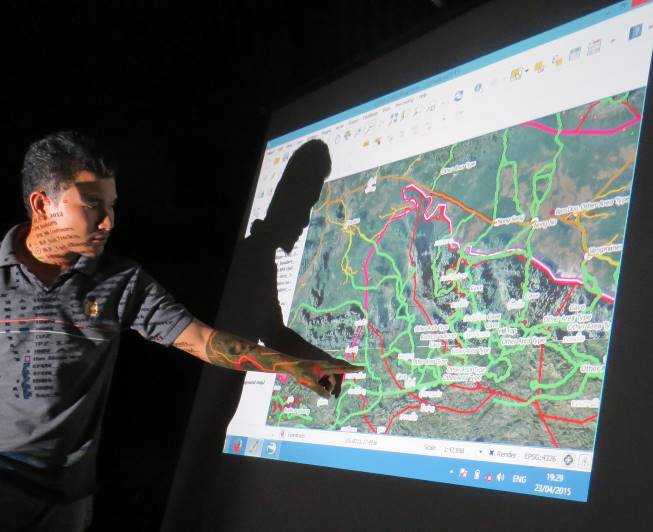Participatory zoning
Verification of GPS and mapping results in the village
To be able to effectively manage the park, it should be clear in advance which areas are of importance for the villagers for their livelihoods, as they have customary rights to use non-timber forest products (NTFPs), wood for construction and hunting for food security.
Meetings at the individual villages for trail mapping indicated approximate boundaries between villages. The updated maps from trail mapping are used in village grouping meetings to commonly agree on the boundaries between the villages.
The participatory zoning meetings are held to delineate different use zones and rules for each zone. Discussions at village level cover: the maps and locations indicated, the use of NTFP’s and wood, the location of areas of usage and the rules and regulations for the collection of NTFP’s and wood. The outcome is a proposal by the village community to delineate a Total Protected Zone (TPZ) and Controlled Use Zone (CUZ) according to the Lao law, with specific rules and regulations for access and use.
A final meeting is then held with surrounding villages to explain the areas concerned and the rules and regulations so that outsiders no longer misuse these areas. These rules are built on existing laws, just adding extra detail where needed.
Lao protected area laws recognize 4 zones: Total Protected Zone (TPZ), Controlled Use Zone (CUZ), Buffer Zone and Corridor. The CUZ allows villagers to use part of the PA for self-sufficiency. The law leaves opportunities to create detailed village rules. As Participatory Land Use Planning is practiced nationwide for all village land, the villagers are used to zoning activities.
Villagers have learned from other activities that creation of rules and dissemination of these rules may result in having more control over their resources.
Although villages have commonly understood boundaries between them, many villagers will go into other village areas to collect NTFPs or hunt. For villagers to be able to control access it is thus of great importance to establish boundaries between village territories within the park and use areas within the village areas. After dissemination of the results these rules and regulations can be implemented and monitored and outsiders banned. Especially in the beginning the rules and regulations will be challenged and support of the village authorities by external support/mediation helps to settle issues between villages.

